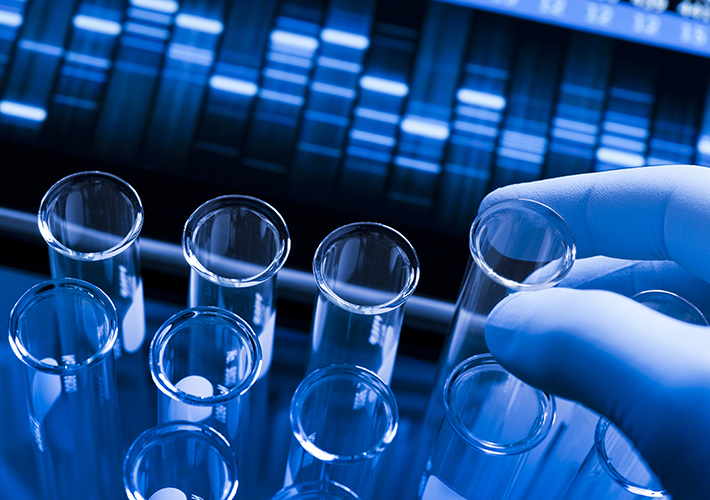
Forensic Standards: Preventing the Perfect Crime
In 2023, more than 125 million viewers got their true crime fix by tuning into NBC’s Dateline to hear stories of deception, betrayal, and murder. And just when it looks like the criminal might get away with murder, evidence is collected, forensic technologies are applied, and the perfect crime is foiled. Since 1992, host Keith Morrison and his co-anchors have been educating viewers about forensic investigations - from fingerprints and DNA testing to gunshot residue tests and fiber and hair analysis.
What viewers might not realize is that a myriad of standards have been established to ensure that the process of gathering, preserving, and presenting evidence is completed efficiently, accurately, and legally. ASTM International’s committee on forensic sciences (E30) works to outline new forensic practices and standards to ensure the accuracy and efficiency of forensic procedures. The committee has jurisdiction over more than 70 standards relating to criminalistics; digital and multimedia evidence; fire debris analysis; drug testing analysis; collection and preservation of physical and digital evidence; and reporting of findings.
Tiny Clue, Big Benefits
When it comes to evidence, fingerprints are useful – but DNA can crack a case wide open. Except for twins, no two people share the same DNA, making it a highly accurate method for identifying a criminal when DNA evidence is left behind.
In an era of digital evolution, forensic investigators are using DNA analysis to not only solve new murder investigations but also clear unsolved cold cases that have been collecting dust on the shelves of the evidence room. With advanced technologies like DNA fingerprinting or forensic genealogy, information can be accessed more easily and in a widespread, universal way - digitally.
One forensic tool that is gaining strength with the use of DNA is forensic genetic genealogy (FGG). In 2007, the first at-home DNA test hit the market. Today, roughly 1 in every 5 Americans have done at-home DNA testing, with the results of their tests being stored in massive databases that can be accessed to identify long-lost family members. Law enforcement agencies investigating violent crimes, such as homicides and sexual assaults, are allowed to access these files and compare their DNA profiles to those in the database.
“Using genetic genealogy tools and genealogical research methods like record searching, family trees are constructed with the goal of identifying potential candidates as the identity of the unknown DNA sample,” says Claire Glynn, Ph.D., part of the Department of Forensic Science at the University of New Haven, CT, USA.
Because DNA is part of evidence collection, specific standards related to this area of criminal investigation exist in E30.
The standard practice for collection and preservation of information and physical items by a technical investigator (E1188) in particular focuses on the collection and preservation of information and physical items to preserve evidence for analysis and establish guidelines to ensure that evidence will remain usable over time. One component the standard addresses is maintaining secure and reliable databases for DNA information
Ensuring Justice with Standards
More than 3,000 cases of wrongful convictions in the United States have been reported since 2023, with the possibility of faulty forensic science behind some of them. Because evidence plays a critical role in a criminal investigation, the collection and preservation of evidence must be conducted in a manner that ensures justice for both the victim and the accused.
Since 1970, forensic technology and standards have evolved significantly. In a recent episode of ASTM's “Standards Impact” podcast, Laura Hernandez, chair of the subcommittee on interdisciplinary science standards (E30.11) said, “There’s definitely been a difference, not only in 25 years, but also in the last 10 years, 5 years.” Hernandez, who is also a forensic scientist with Verity Labs, continued, “All forensic disciplines have to adapt with changes and times.”
The standard practice for receiving, documenting, storing, and retrieving evidence in a forensic science laboratory (E1492) (currently under review as WK86598), helps to establish how evidence was collected and processed, who collected it, where it was collected, and who has had custody of the evidence. Protecting the chain of custody of the evidence while it is at a forensic laboratory is critical when presenting and defending the evidence in court. If the chain of custody is broken, the evidence may not be deemed credible or be inadmissible in court.
The Perfect Crime: A Thing of the Past
Forensic science technologies are continuously advancing and improving. Through the innovations and enhancements of the methods of collecting and storing data to the methods of using databases to solve crimes, standards can help pave the way to efficient and organized guidelines, catching one criminal at a time.
As forensic technologies advance and standards are developed to ensure an airtight case against criminals, keeping a crime a secret may no longer be possible.
Regan Daley is a communications intern with ASTM International.
 SN Home
SN Home Archive
Archive Advertisers
Advertisers Masthead
Masthead RateCard
RateCard Subscribe
Subscribe Email Editor
Email Editor